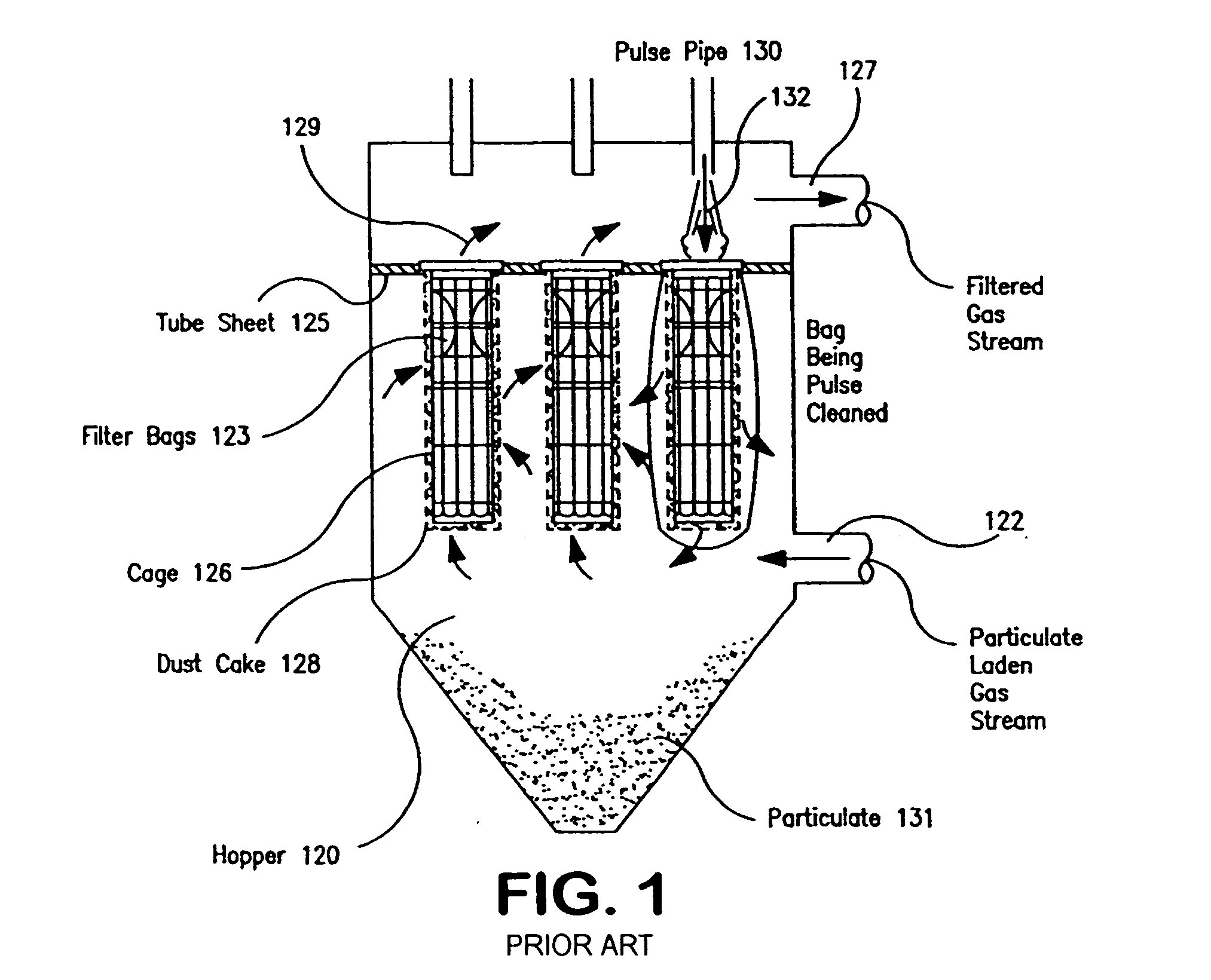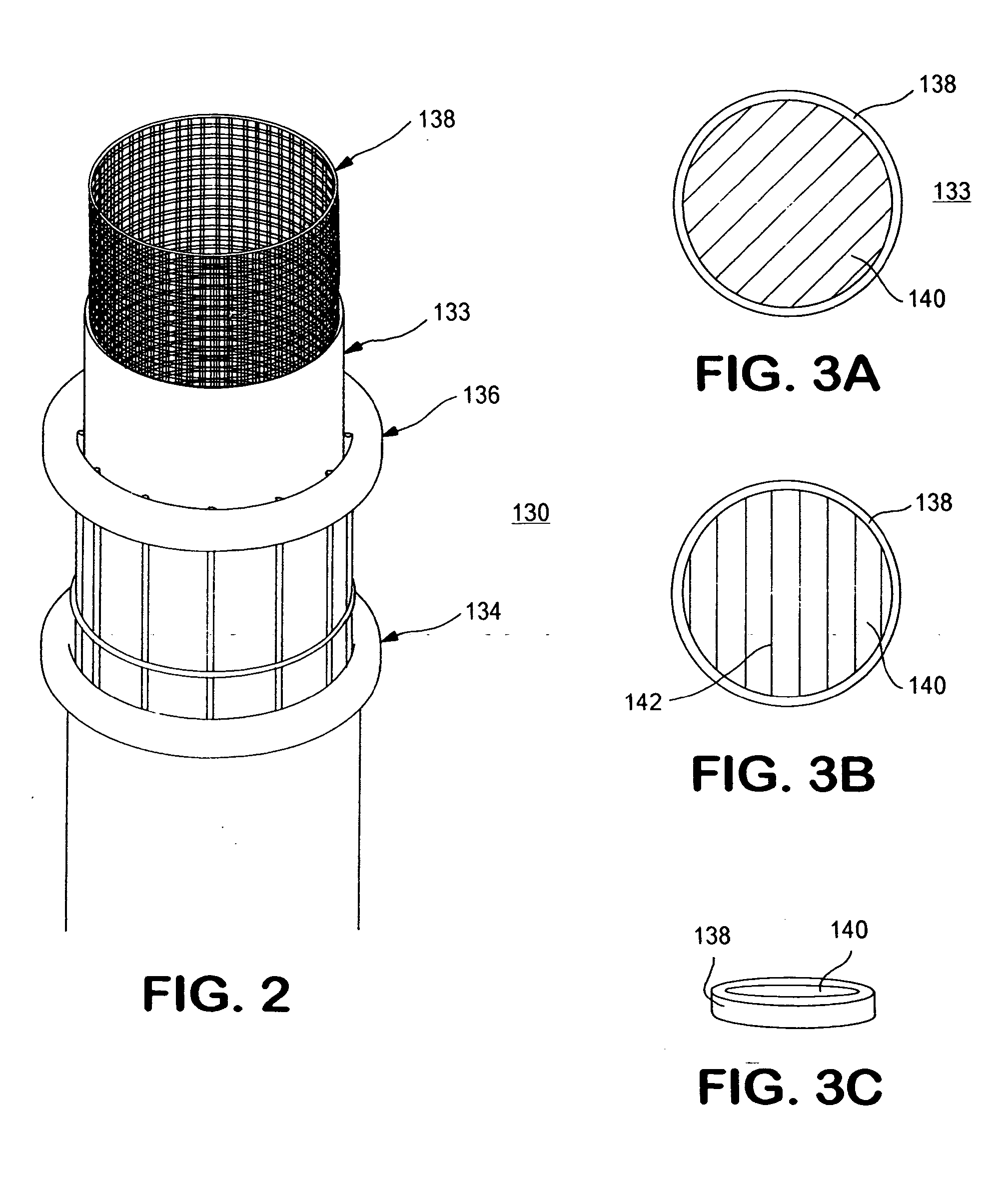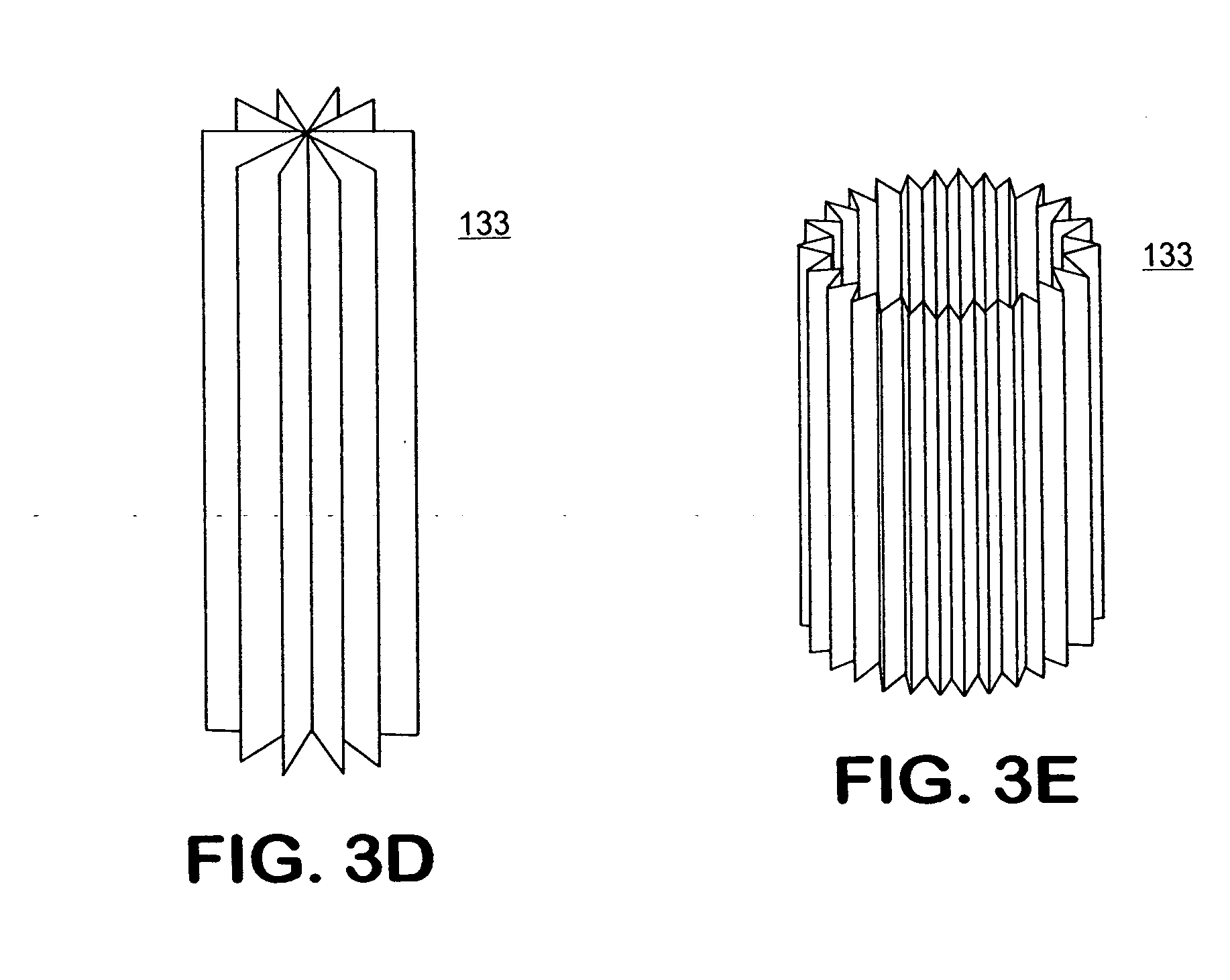Filter system
a filter system and filter technology, applied in the field of filter systems, can solve the problems of reducing the commercial value of the ash, affecting the efficiency of the ash removal process, and the carbon contamination of the fly ash produced, so as to reduce or eliminate the contamination of the fly ash, improve the efficiency of the mercury removal process, and facilitate the effect of cost-effective retrofi
- Summary
- Abstract
- Description
- Claims
- Application Information
AI Technical Summary
Benefits of technology
Problems solved by technology
Method used
Image
Examples
example 1
[0053] A 4 inch by 6 inch section of VAF-90 activated carbon felt (ACF) was cut from a large sheet of material obtained from Shanghai No. 1 ACF Company Co., Ltd. (Shanghai, China) and weighed precisely. As received, the material had a nominal mass-per-unit-geometric-area of 260 g m−2 and a measured Frazier Number air permeability of about 60-65. The cut sample was placed on a platen heated to about 90° C., slightly dampened with 2-propanol, and impregnated using an aerosol sprayer under atmospheric conditions. The sample was treated on both sides until wet through but not dripping with an aqueous solution of 1.0 F potassium iodide and 0.27 F zinc acetate dihydrate. The wet sample was placed on a stainless steel screen in a solvent-vented muffle furnace held at 200° C. for about one hour, cooled and equilibrated for 2 hours, then weighed. The dried sample displayed an air permeability of about 52-60 Frazier. A small portion was sent to Galbraith Laboratories, Inc. in Knoxville, Tenn....
example 3
[0055] A sample was prepared similarly to the procedure of Example 1 except that no zinc and a slightly higher loading of potassium iodide were added. Composition and results of testing in the High Temperature Mercury Adsorption Capacity and Efficiency Test appear in Table 1.
example 4
[0056] A sample was prepared similarly to the procedure of Example 1 except that no potassium iodide was added and a higher zinc loading was achieved. This sample was tested in the high temperature mercury adsorption capacity and efficiency test. Results appear in Table 1.
PUM
| Property | Measurement | Unit |
|---|---|---|
| Temperature | aaaaa | aaaaa |
| Electric potential / voltage | aaaaa | aaaaa |
| Flexibility | aaaaa | aaaaa |
Abstract
Description
Claims
Application Information
 Login to View More
Login to View More - R&D
- Intellectual Property
- Life Sciences
- Materials
- Tech Scout
- Unparalleled Data Quality
- Higher Quality Content
- 60% Fewer Hallucinations
Browse by: Latest US Patents, China's latest patents, Technical Efficacy Thesaurus, Application Domain, Technology Topic, Popular Technical Reports.
© 2025 PatSnap. All rights reserved.Legal|Privacy policy|Modern Slavery Act Transparency Statement|Sitemap|About US| Contact US: help@patsnap.com



